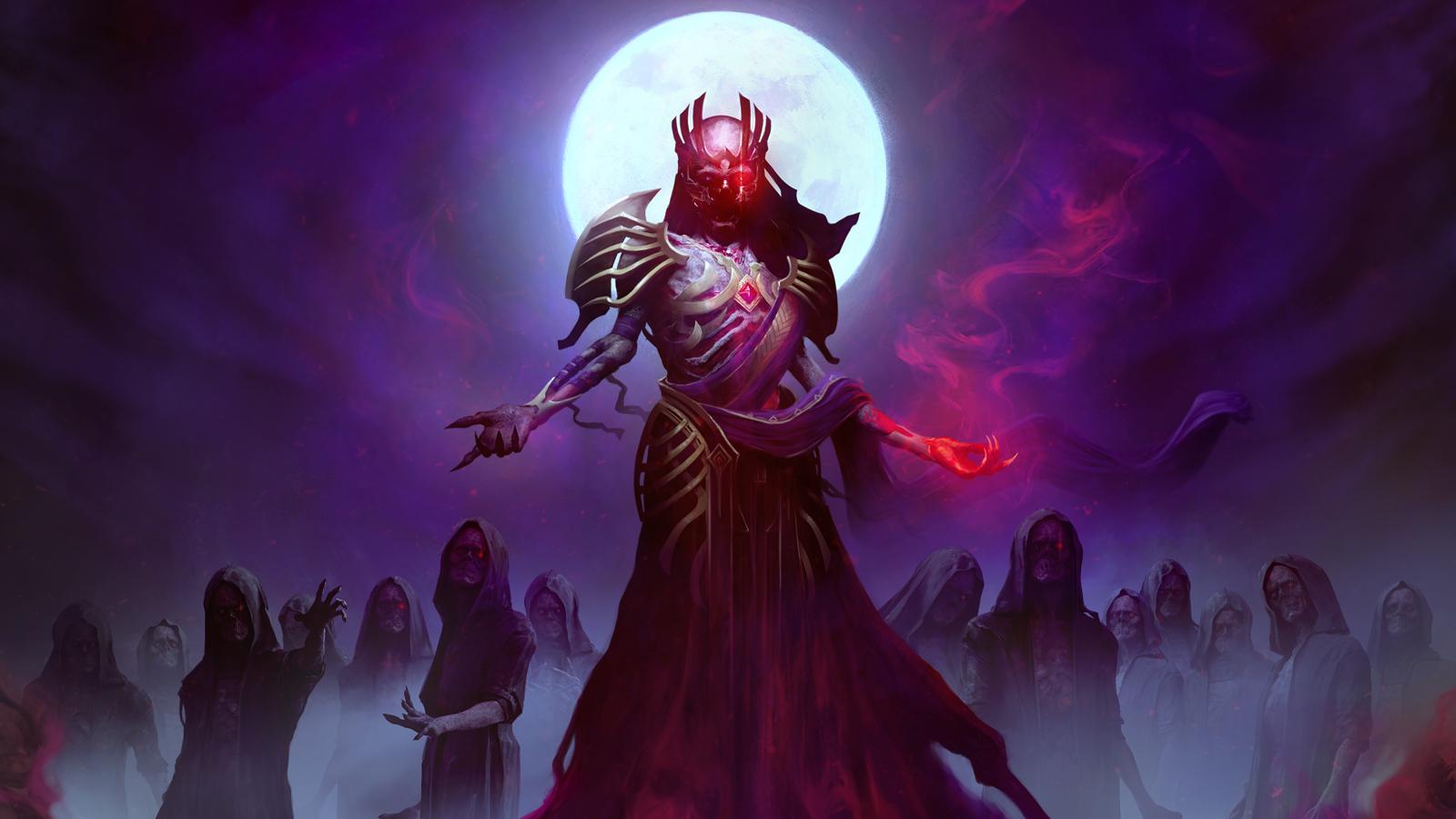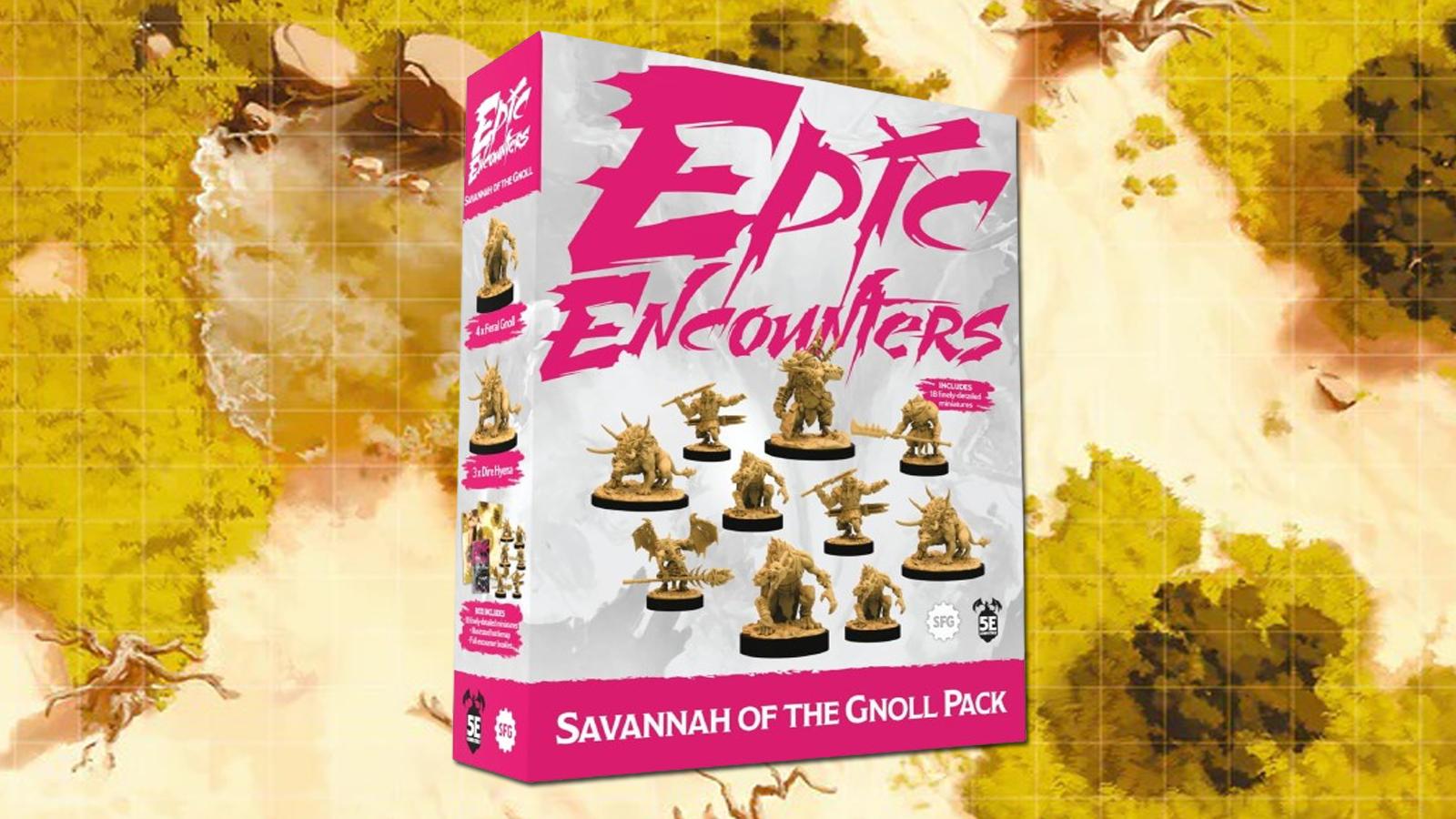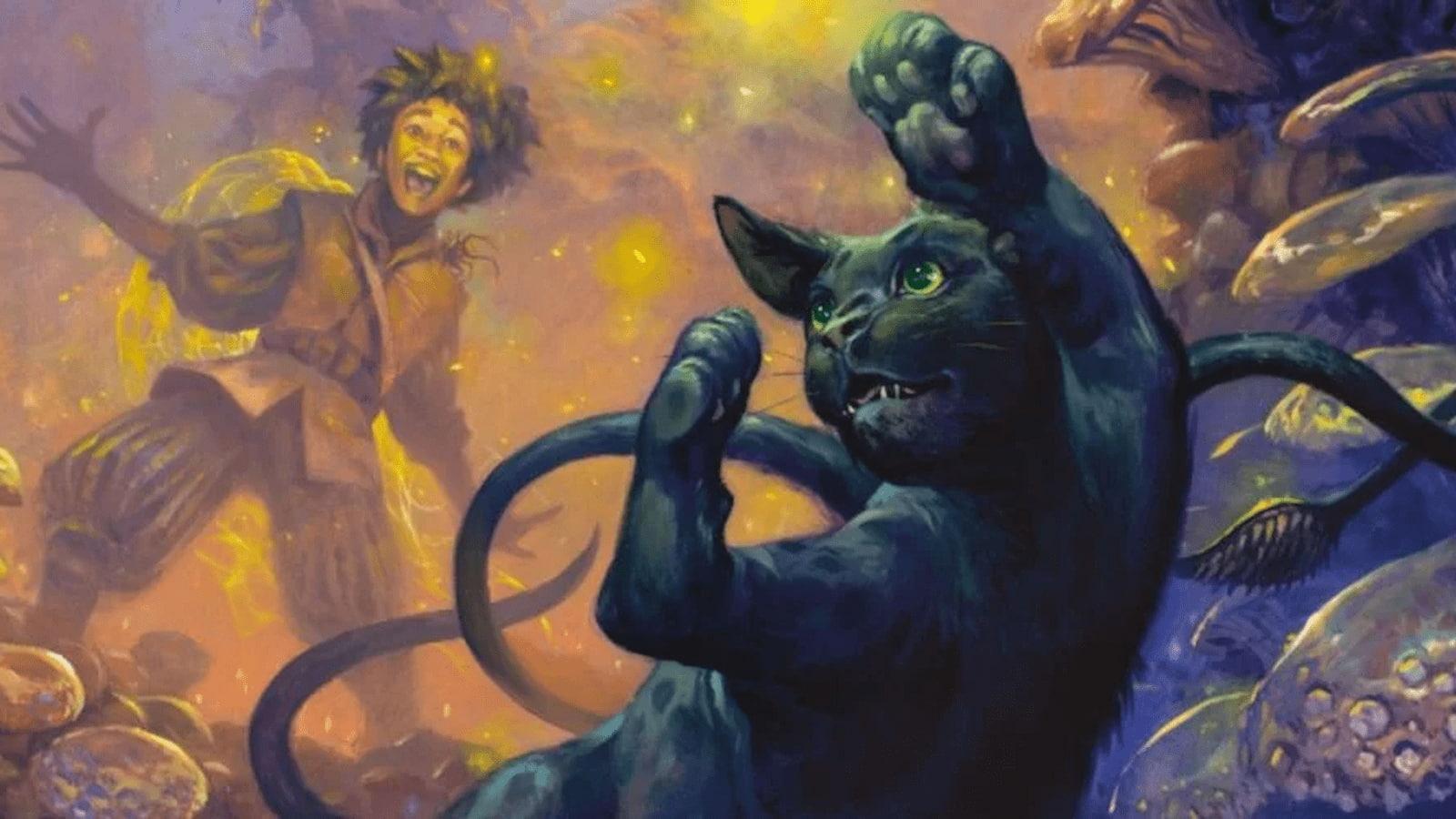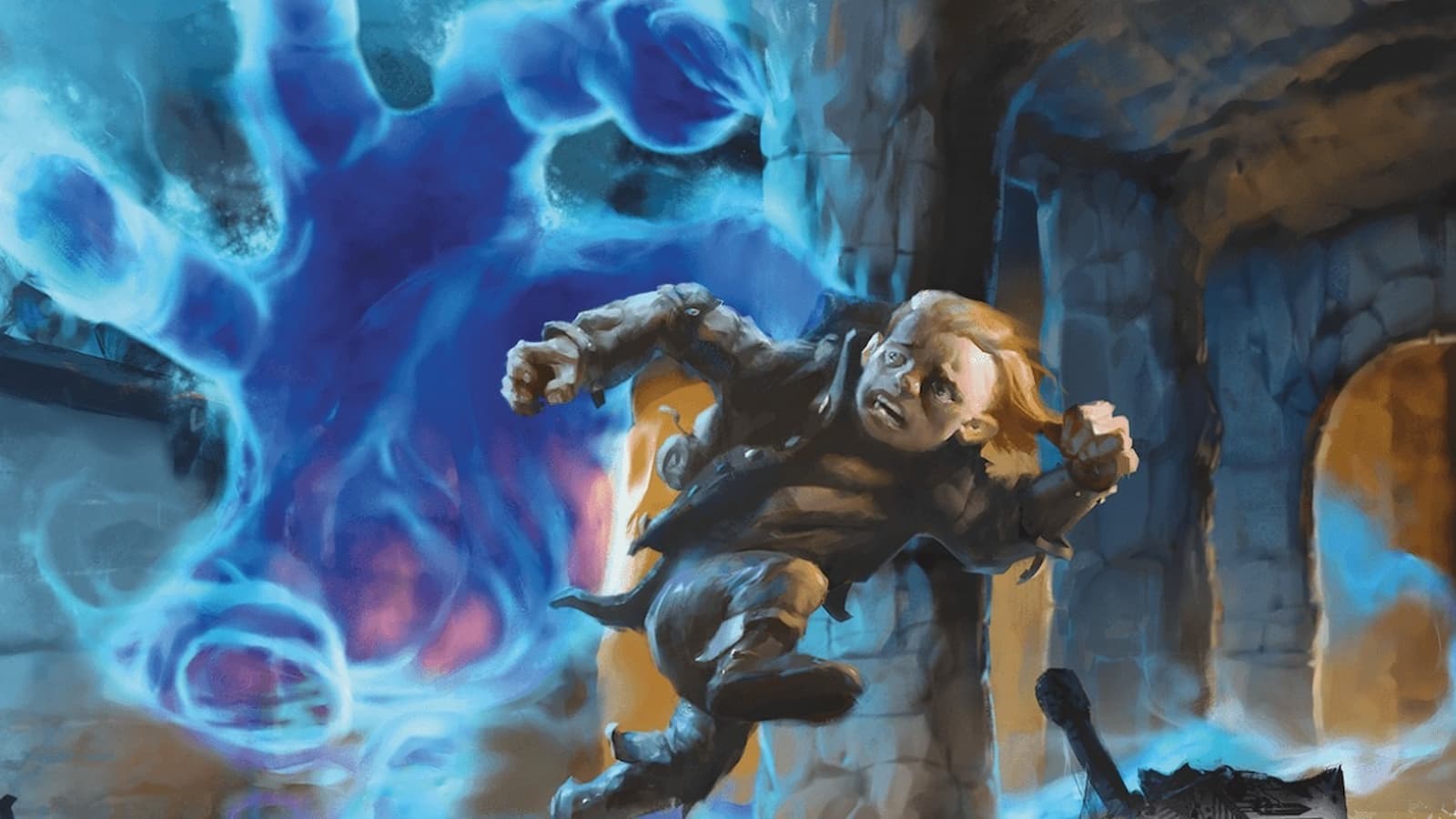D&D 5e Blood Hunter guide: Best options to stalk and slay monsters
 WOTC/Joma Cueto
WOTC/Joma CuetoBlood Hunter is a very unique D&D 5e class, not initially designed by Wizards of the Coast, but by Critical Role’s Matt Mercer. We’ll walk you through what you need to know before creating a Blood Hunter in D&D 5e.
D&D 5e has been an incredibly popular edition of the legendary RPG for years now. Long-term players have combed through many of the options that 5e has to offer and may be in search of something new.
Blood Hunter stands apart from 5e’s other classes, both in its origin and mechanics. Critical Role’s Matt Mercer has designed a class that will be favored among Witcher fans. This blood magic-wielding warrior can hunt down human foes and monstrous prey alike, using their weapons, wits, and an array of dark rituals to get the job done.
Here’s what you should know about building a Blood Hunter in D&D 5e.
Best Race options for Blood Hunters in D&D 5e
 Critical Role
Critical RoleFollowing the release of 2020’s Tasha’s Cauldron of Everything sourcebook, playable race, and starting ability scores are now no longer as specifically tied. No matter the playable character’s species, players are now free to put a +2 and a +1 into two stats of their choosing.
For players using Tasha’s rules, feel free to pick any race you gravitate towards, or make a selection based on the race’s other abilities. If using the basic Player’s Handbook rules, choosing a race that boosts your class’s most important stats is key.
Dwarf
One of D&D’s best options for martial races, Dwarves match perfectly with the Blood Hunter’s style and strengths. If picking the Moutain Dwarf subrace, your Blood Hunter will start out with an impressive +2 to both their Strength and Constitution, making them much more likely to live through the early levels.
Goliath
Among the strongest and hardiest races in D&D 5e, Goliaths make incredible frontline combatants. With boosts to strength and constitution, as well as abilities to soak up damage and additional carrying capacity, Goliaths suit the Bloodhunter’s risk-and-reward style perfectly.
Blood Hunter Hit Dice: D10
Hit dice are used to determine how many hit points you gain when leveling up and how much you can heal during a short rest. The Blood Hunter’s Hit Dice is a D10, putting it on the same footing as formidable combatants like the Paladin and Ranger.
Considering that one of the class’s key mechanics requires self-damage in order to activate, a high Hit Dice was always going to be a crucial requirement.
Blood Hunter Ability Scores and Saving Throws
Here’s how you should prioritize your ability scores for a general Blood Hunter build:
- Constitution
- Strength or Dexterity
- Intelligence
- Wisdom
- Charisma
- Dexterity or Strength
D&D 5e’s martial classes should almost always prioritize Strength or Dexterity as their primary ability, but we’d argue that Blood Hunter is the exception. Not only does the class need to be hardy to soak up hits in combat, but their self-damage can often require multiple activations throughout the adventuring days. As a result, Constitution being as high as possible is a necessity to not kneecap the Blood Hunter.
Both Strength and Dexterity work excellently with the Blood Hunter, with Dexterity having a slight edge due to enabling ranged builds that can help mitigate some of the danger and damage risks inherent to this class.
Intelligence helps with both the out-of-combat ‘hunting’ part of this class, enabling information gathering and effective tracking without relying on Survival. Additionally, several of the class’ abilities take Intelligence into account.
Wisdom is good for broadly useful utility skills like Perception, Insight, and Survival, and Wisdom saves are frequent in 5e.
Charisma saves are less common than Wisdom, Dexterity, or Constitution saves, and the Blood Hunter’s grim duty and unsettling abilities rarely mesh well with being a social charmer.
Whichever score out of Dexterity or Strength you didn’t choose to build your Blood Hunter around can be safely dumped.
Blood Hunter starting skills and proficiencies
Blood Hunters start out with the following proficiencies:
- All armor
- Shields
- All weapons
- Alchemist’s Supplies
- Strength and Intelligence Saving Throws
Blood Hunters also gain access to three skills from the following list at level one:
- Acrobatics
- Arcana
- Athletics
- History
- Insight
- Investigation
- Religion
- Survival
Blood Hunter class features
 WOTC
WOTCHunters Bane transforms Blood Hunters into shadow-stalking slayers
A big appeal of playing a Blood Hunter is the ability to be a Witcher-like killing machine. The influence of The Witcher is all over this class, and nowhere is it more apparent than in Hunter’s Bane.
With this level 1 ability, Blood Hunters have survived a dark ritual that perfectly attunes the senses the need to hunt their prey. You gain advantage on Survival checks to track unnatural creatures, specifically Fey, Fiends, and Undead. This feature also grants advantage on Intelligence checks used to remember information on these creatures.
The Hunter’s Bane also grants proficiency in Blood Magic, using your own blood to fuel powerful effects, including a Save DC based on your choice of Intelligence or Wisdom.
Blood Maledict brings sorcery through suffering
At first level, Blood Maledict grants you a choice of Blood Curses that can be used to manipulate and damage opponents. These Curses are a similarly customizable feature to the Warlock’s Eldritch Invocations, but both more active and more restricted, only able to be used a limited number of times per rest.
Blood Curses can be amplified by taking damage equal to a single roll of your Hemocraft die. The Hemocraft die starts as a D4 and increases in size as you gain Blood Hunter levels, to a maximum of a D10. When a curse is amplified, it is cast in its true, untempered form, having a greater effect in exchange for the damage you have taken.
Crimson Rites imbue your tools with the elements
Blood Hunters fight with every advantage they can get their hands on, and that includes Crimson Rites. Starting at level 2, by using a bonus action to imbue one of your weapons with a Rite, it gains additional elemental damage until the end of your next rest.
Similarly to using a Blood Curse, imbuing a Rite requires rolling a Hemocraft die and taking the damage. The extra elemental damage the weapon can deal is also dependent on Hemocraft, as the die is added to each of the weapon’s attacks.
Blood Hunters can initially choose between imbuing Fire, Ice, and Lightning damage, but later levels offer the opportunity to imbue Radiant, Thunder, and Psychic damage too.
Blood Hunter Subclasses
The four available Blood Hunter Subclasses are detailed below. These Subclasses are unlocked once a Blood Hunter reaches level 3.
Ghost Slayer
Moving in the direction of an exorcist, the Ghost Slayer channels radiant damage, granting itself extra attacks, and even steps through the veil between worlds to become intangible. When it comes to out-and-out damage, the Ghost Slayer is right at the peak of Blood Hunter’s potential.
Profane Soul
As the Fighter and Rogue draw on wizardry as Eldritch Knights and Arcane Tricksters respectively, the Profane Soul is a Blood Hunter that gains partial Warlock powers. In gaining access to a patron, spell slots, and extra abilities, the Profane Soul is a highly versatile Blood Hunter that stands apart from its peers.
Mutant
The mutant strays from the typical ‘monster hunter’ side of the Witcher fantasy, and instead goes all in on alchemy and mutagens. The Mutant Blood Hunter embraces their nature as a living weapon and imbibes different potions and solutions, customizing their skills as they do. By invoking certain mutations, the Mutant Blood Hunter gains certain skills and combat disadvantages in exchange for powerful and versatile effects.
Lycan
Harnessing the power of Lycanthropy, the Lycan Blood Hunter becomes difficult to control, but an absolute menace on the battlefield. In addition to their Crimson Rites, Lycans can do yet more additional damage by tapping into their transformations. Though they at times risk becoming a danger to their allies, Lycans can be a huge asset to have on your side in a fight.
If you click on a product link on this page we may earn a small affiliate commission.



